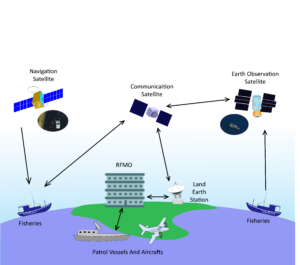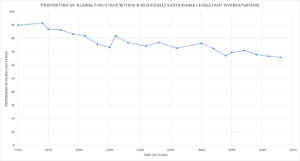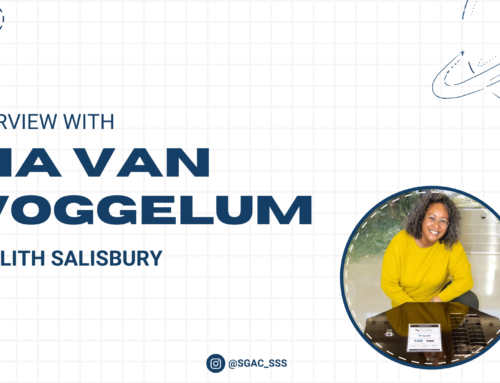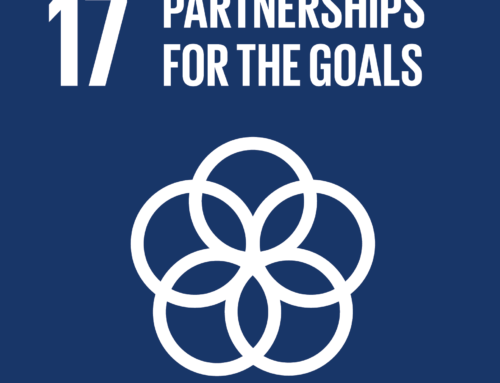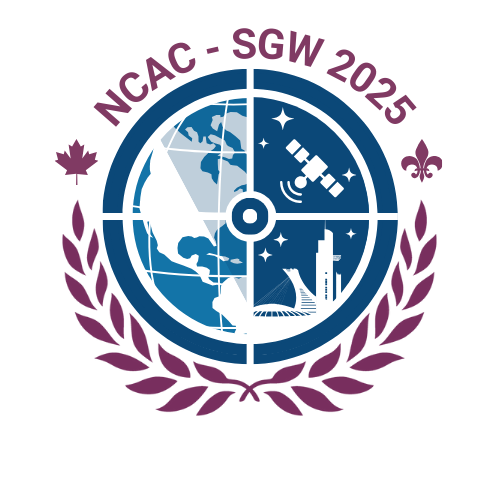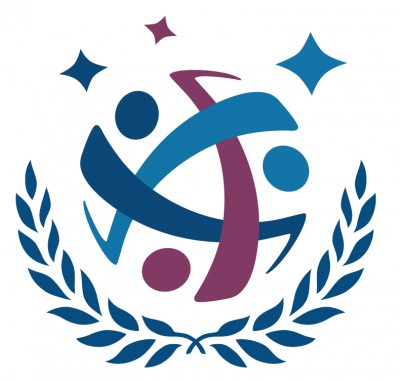Authors: Marsh, M., Patil, R., Parmar, A., & Bendre, T.
WHAT IS SDG TARGET 14.4?
United Nations (UN) Sustainable Development Goal (SDG) 14: Life Below Water seeks to conserve and sustainably use the world’s oceans, seas, and marine resources. Underpinning SDG 14 are time-bound targets for all nations to strive for. Unlike most SDG targets, which have 2030 as a target year, target 14.4 was set for 2020 and has since passed. Illegal, unreported, and unregulated (IUU) fishing is a global issue, which many observers believe occurs in most fisheries and accounts for up to 30% of total catches in some important fisheries (FAS, 2016).
The target was to regulate harvesting effectively and end overfishing, illegal, unreported, and unregulated fishing, and destructive fishing practices by 2020. Furthermore, there is a need to implement science-based management plans to restore fish stocks in the shortest possible time, at least to levels that can produce maximum sustainable yield as determined by their biological characteristics. Progress in achieving the target was analyzed by monitoring the proportion of fish stocks within biologically sustainable levels.
IUU FISHING & PORT STATE MEASURES
IUU fishing practices are a crime driven by a range of factors; greed for high financial returns, the growing global demand for fish and other seafood, and catch scarcity or depletion of fish stocks. Unlike law-compliant fishers, illegal fishing occurs when vessels or harvesters operate in violation of a fishery or coastal state’s laws. Unlawful practices include fishing without a license, environmentally harmful practices such as fish bombing, fishing in protected marine areas, and catching prohibited fish. Unreported fishing refers to fishing that has been unreported or misreported to the relevant national authority or regional fisheries management organization in contradiction of applicable laws and regulations. Unregulated fishing refers to fishing by vessels without nationality, with a flag of a country not affiliated with the regional fishing management organization (RFMO) overseeing that fishing area or fish species on the high seas or harvesting in unregulated territories.
The Agreement on Port State Measures (PSMA) serves as a legal instrument to prevent illegally caught fish from entering the marketplace through ports worldwide. The objective of PSMA is to prevent, deter, and eliminate IUU fishing by preventing vessels engaged in IUU fishing activities from using ports to land their catches. PSMA came into force on 5 June 2016 where 68 nations are party to the agreement (FAO, 2021). To support legal frameworks, such as the PSMA, the Global Record was established in 2016 – a comprehensive online and regularly updated database of vessels engaged in fishing operations. Many stakeholders contribute to the Global Record, including entities with space assets, which are instrumental in the monitoring and managing fishing activities worldwide.
EYES IN THE SKY
Space-based assets help ensure compliance with existing international frameworks by providing fishery management organizations with vessel tracking and monitoring capability (Detsis et al., 2012). Under the Global Record initiative, each fishing vessel receives a Unique Vessel Identifier (UVI), which satellite systems track and remain bound to that vessel throughout its operating lifetime.
Figure 1: Tracking fishing vessel movement using satellite systems
(PEW Charitable Trust, 2016; European Commission, N.D.)
The most commonly used satellite-supported systems are:
- VESSEL MONITORING SYSTEM (VMS)
Data transmitted from vessels include location, charted course, and speed. The vessel monitoring system collects and sends data every 2 hours using communication platforms from various providers such as Inmarsat and Iridium (Gallego, 2017).
- AUTOMATIC IDENTIFICATION SYSTEM (AIS)
Initiated by the companies exactEARTH and Spire in 2008, this system provides the same dataset as the VMS platform but in real-time, ensuring maritime safety and collision avoidance (ibid., para.16).
- SNPP EARTH OBSERVATION SATELLITE
The Suomi National Polar-orbiting Partnership (SNPP) Earth observation satellite was deployed in 2011. It gathers precise data on fishing boats’ activities using fish aggregation lights or fish aggregating devices (FADs). Schools of fish typically converge on these spotlights at night, enabling fishers to catch with ease. The SNPP satellite carries a key instrument, the Visible and Infrared Imager/Radiometer Suite (VIIRS), capable of collecting low-light imagery at high spatial resolutions (Oozeki, 2017).
Land-based stations receive satellite data transmitted from fishing vessels, which relays to responsible operating centers tasked with monitoring, analyzing, and reporting activities. Suspicious or illegal activities are reported to local law and maritime enforcement, who may take subsequent action, such as tasking a patrolling vessel to investigate or intervene. The VMS and AIS provide authorities with critical vessel information, including the UVI number, speed, and location. Captured imagery from SNPP satellites supports the IUU fishing law enforcement effort (Oozeki, 2017). Table 1 summarizes the advantages and disadvantages of each satellite-supported system used to manage IUU activities.
| System | Advantages | Disadvantages |
| VMS |
1. Monitors all movements 2. Autonomy 3. Poor weather resilience |
1. No real-time data transmission 2. Transponder controls are on individual vessels |
| AIS |
1. Low-light functionality 2. Monitors inter-vessel communications 3. Cost efficiency |
1. Susceptible to errors from improper equipment settings 2. Usage restricted to specific vessel classes |
| SNPP |
1. High calibration 2. Eliminate cloud and ocean interference |
1. Nadir spatial resolution of 750m detects only well-lit vessels 2. Thermal water-vapor band is absent |
Table 1: Advantages and disadvantages of satellite-supported systems.
HOW ARE THE FISH TODAY?
SDG progress reports from 2019 and 2020 state IUU fishing activities are the greatest threat to the marine biome. Despite stable global fish stocks between 2008 and 2013, 2015 observed a renewed drop of fish stocks by 67% and a further 65.8% in 2017. In 2015 and 2017, the Mediterranean and the Black Sea recorded the lowest percentages of fish stocks.
Apart from IUU activities, the failure to prevent further decline in fish stocks is due to limitations in maximum sustainable yields (MSY), which regulate the total allowable catch. The maximum sustainable yield defines the maximum amount of a particular fish that can be caught over an indefinite period without affecting its sustainability. However, reports published by Oceana in 2012 and the World Ocean Review in 2010 state that MSY calculations do not consider the interdependencies between multiple fish stocks. To put this into context, assume a nation deems sardine stocks at a sustainable population level for fishing and sets a maximum sustainable yield of 20 metric tons. Each fishing vessel originating from the said nation can legally harvest up to 20 metric tons of sardines annually. However, a reduction in sardine populations shapes the local marine food chain, particularly for whales and dolphins, which rely on sardines as a food source.
Figure 2: Proportion of global fish stock within biologically sustainable levels (Singh, 2020)
Harvesting fish over sustainable limits translates to population reductions of other marine species. Ensuring a sustainable marine ecosystem requires devising new parameters to regulate and determine annual catch limits. Furthermore, the impact of illegal fishing must be studied holistically. Other parameters must be considered when setting fishing quotas for worldwide fisheries, such as fish migration patterns and local food chains. There is an urgent need to implement stringent anti-IUU fishing laws in conjunction with international cooperation. As of 2020, only 66 countries are PSMA compliant, of which 75% of the members partially implement the guidelines laid out in the PSMA.
THE PATH FORWARD
The persistence of IUU activities is destabilizing global fish stocks. Legal agreements preventing illegally caught fish from entering the marketplace through ports worldwide are in place, such as PSMA. Space assets reinforce these instruments, providing a means for monitoring activities and compliance. Despite progress in policy and system implementation, the catch of unsustainable yields continues to drive global stocks further down; 65.8% as of 2017. Significant efforts are needed on multiple levels to ensure the restoration of global fish stocks, including broader international cooperation and inclusion to mandated agreements. Combined with progressive advancements in space monitoring technologies, IUU fishing activities can be reduced, ensuring ocean fish populations recover and fishers operate on the high-seas sustainably.
REFERENCES
Detsis, E., Brodsky, Y., Knudtson, P., Cuba, M., Fuqua, H., Szalai, B., 2012. Project Catch: A space based solution to combat illegal, unreported and unregulated fishing Part I: Vessel monitoring system. Journal of Acta Astronautica, 80, pp.114-123.
European Commission, Vessel Monitoring System-The EU system for fishneris control, <https://ec.europa.eu/fisheries/cfp/control/technologies/vms>
Federation of American Scientists, 2016. Global Implications of Illegal, Unreported, and Unregulated (IUU) Fishing. [pdf] Available at: <https://fas.org/irp/nic/fishing.pdf> [Accessed 12 March 2021].
Food and Agriculture Organization of the United Nations, 2006. Report of the Expert Consultation on the use of Vessel Monitoring Systems and Satellites for Fisheries Monitoring, Control and Surveillance. [pdf] Available at: <http://www.fao.org/3/a-a0959e.pdf > [Accessed 21 February 2021].
Food and Agriculture Organization of the United Nations, 2007. MODEL SCHEME ON PORT STATE MEASURES TO COMBAT ILLEGAL, UNREPORTED AND UNREGULATED FISHING. [pdf] Available at: <http://www.fao.org/3/a0985t/a0985t00.htm> [Accessed 21 February 2021].
Food and Agriculture Organization of the United Nations, 2009. Agreement on Port State Measures to Prevent, Deter and Eliminate Illegal Unreported and Unregulated Fishing (PSMA). [pdf] Available at: <http://www.fao.org/treaties/results/details/en/c/TRE-000003/> [Accessed 21 February 2021].
Singh, P., 2020. Food and Agriculture Organization of the United Nations. Sustainable Development Goals: Indicator 14.4.1- Proportion of fish stocks within biologically sustainable levels. [graph] Available at: <http://www.fao.org/sustainable-development-goals/indicators/1441/en/> [Accessed 14 March 2021].
Food and Agriculture Organization of the United Nations, 2021. Agreement on the Port State Measures. [online] Available at: <http://www.fao.org/port-state-measures/background/history/en/> [Accessed 12 March 2021].
Gallego, B., 2017. Satellite Technology and IUU Fishing, 28 December. [blog] Available at:
<https://houseofocean.org/2017/12/28/satellite-technology-and-iuu-fishing/> [Accessed 3 March 2021].
Iyer, G., 2019. Monitoring IUU in India using Space Technology: Prospects and Challenges. India: Observer Research Foundation, India. [pdf] Available at:
< https://swfound.org/media/206853/iuu-gayathri-iyer-4-oct-2019.pdf > [Accessed 15 February 2021].
Oceana, 2012. Reasons to achieve and move beyond maximum sustainable yield. [pdf] Available at:
<http://oceana.org/sites/default/files/euo/OCEANA_position_MSY.pdf> [Accessed 26 February 2021].
Oozeki, Y., Inagake, D., Saito, T., Okazaki, M., Fusejima, I., Hotai, M., Watanabe, T., Sugisaki, H., Miyahara, M., 2017. Reliable estimation of IUU fishing catch amounts in the north-western Pacific adjacent to the Japanese EEZ: Potential for usage of satellite remote sensing images. Journal of Marine Policy, 88, pp.64-74.
The PEW Charitable Trust, 2016. Tracking Fishing Vessels Around the Globe, Project: Ending Illegal fishing. <https://www.pewtrusts.org/en/research-and-analysis/fact-sheets/2016/05/tracking-fishing-vessels-around-the-globe>
The PEW Charitable Trusts, 2016. Tracking Fishing Vessels Around the Globe: Vessel monitoring systems play a critical role. [pdf] Available at:
<https://www.pewtrusts.org/en/research-and-analysis/fact-sheets/2016/05/tracking-fishing-vessels-around-the-globe> [Accessed 25 February 2021].
United Nations, 2016. The Sustainable Development Goals Report 2016. [pdf] Available at:
<https://unstats.un.org/sdgs/report/2016/> [Accessed 20 February 2021].
United Nations, 2017. The Sustainable Development Goals Report 2017. [pdf] Available at:
<https://unstats.un.org/sdgs/report/2017/> [Accessed 20 February 2021].
United Nations, 2018. The Sustainable Development Goals Report 2018. [pdf] Available at: <https://unstats.un.org/sdgs/report/2018/> [Accessed 20 February 2021].
United Nations, 2019. The Sustainable Development Goals Report 2019. [pdf] Available at: <https://unstats.un.org/sdgs/report/2019/> [Accessed 20 February 2021].
United Nations, 2020. The Sustainable Development Goals Report 2020. [pdf] Available at: <https://unstats.un.org/sdgs/report/2020/> [Accessed 18 February 2021].
World Ocean Review, 2010. Living with the oceans. A report on the state of the world’s oceans. [pdf] Available at: <https://worldoceanreview.com/en/wor-1/fisheries/> [Accessed 22 February 2021].
World Ocean Review, 2013. The Future of Fish – The Fisheries of the Future. [pdf] Available at: <https://worldoceanreview.com/en/wor-2/fisheries> [Accessed 22 February 2021].

